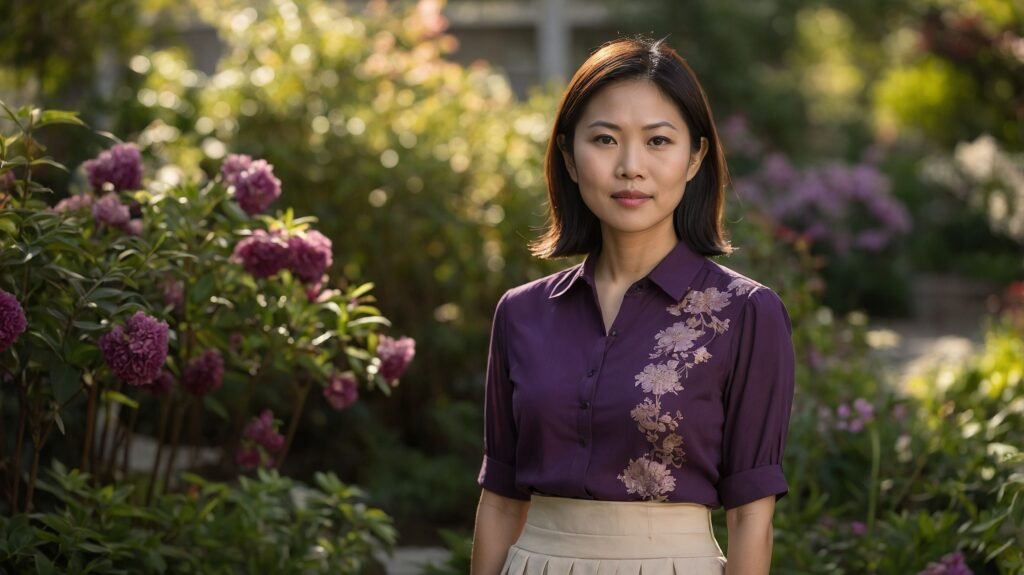Key Takeaways
- Importance of color harmony in fashion.
- Psychological impact of color combinations.
- The role of cultural influences on color preferences.
- Mastering the color wheel for outfit coordination.
- The rise and fall of color trends.
- Influence of seasons on color choices.
- The significance of contrast and complementarity.
- How color can enhance or diminish physical features.
Dive into the science behind winning color combinations, understanding the principles that make certain hues work harmoniously together. Fashion isn’t just about fabric and design; it’s a blend of art and psychology.

The Psychology of Color
Colors aren’t just visual elements; they evoke emotions, feelings, and memories. When you wear a certain color, you’re not just making a fashion statement, but also reflecting a mood.
The Emotional Impact of Hues
Have you ever noticed how the color blue calms the mind, while red radiates confidence? Each color shade has its own unique psychological impact, affecting our emotions and shaping perceptions. Color psychology plays a powerful role in how we feel and respond to different environments.
Cultural Color Codes
In some cultures, white symbolizes purity, while in others, it represents mourning. Delving into cultural color codes helps in understanding global fashion dynamics.
Seasonal Shades and Moods
Fashion color trends shift with the seasons. In winter, popular fashion colors include deep, cozy shades that evoke warmth, while summer fashion introduces vibrant and light hues, mirroring the lively mood of nature.
The Color Wheel in Fashion
Gaining a solid understanding of the color wheel is essential for mastering outfit coordination and creating stylish, well-matched looks.
Basics of the Color Wheel
From primary to tertiary colors, getting a grasp on the basics helps in creating appealing ensembles.
Analogous and Complementary Colors
Knowing which colors sit side by side and which are opposites can elevate your fashion game. It’s the secret behind many iconic looks!
Triadic and Tetradic Combinations
For those looking to experiment, triadic and tetradic color schemes offer exciting combinations, creating dynamic and harmonious outfits.
Wardrobe Essentials by Color
A list of must-have clothing items based on their color and versatility:
- Little Black Dress
- Crisp White Shirt
- Navy Blue Trousers
- Earthy Brown Boots
- Sunshine Yellow Summer Dress
- Olive Green Jacket
- Classic Gray Blazer
- Ruby Red Scarf
- Pastel Pink Blouse
- Turquoise Jewelry

The Influence of Color Trends
Fashion is ever-evolving, and so are the trending colors.
From neon shades of the ’80s to the pastels of the 2000s, the trending colors have shaped decades of fashion. While classics remain timeless, it’s essential to know the colors currently in vogue.
The Science of Contrast and Complementarity
Contrasting colors pop, while complementary ones create a seamless look. Understanding this balance is key to creating outfits that stand out yet look cohesive.
The Role of Seasons in Color Choices
Each season brings its palette, influencing fashion choices.
Spring and Fresh Hues
Spring is all about fresh, rejuvenating colors. Think of blooming flowers and clear skies.
Summer and Vibrancy
Bright and vivacious, summer colors are all about celebrating warmth and sunshine.
Autumn and Earth Tones
Earthy tones dominate the autumn fashion scene, reflecting the changing landscape.
Winter and Deep, Cozy Colors
Winter is about deep, warm colors that echo the coziness of the season.
Colors and Physical Features
Colors can enhance or diminish certain physical features. Knowing which shades flatter your skin tone, hair color, and body shape can be a game-changer in personal styling.
Historical Evolution of Color in Fashion
From the royal purples of ancient times to the neon greens of the ’80s, history has seen a rich tapestry of colors shaping fashion narratives.
The Sustainability Aspect
Fashion today is as much about style as it is about sustainability. Natural dyes and sustainable colorants are making waves, ensuring that the fashion world remains colorful without compromising the planet.

Your Personal Color Guide
While understanding global trends and the science behind colors is essential, fashion is deeply personal.
Identify Your Palette
Just as artists have their favorite palette, identify colors that resonate with your personality and style.
Experiment and Evolve
Don’t shy away from experimenting. Sometimes, the most unexpected combinations create the most stunning looks.
Trust Your Instincts
While theories and trends offer guidance, trust your instincts. After all, personal style is all about self-expression.
Beyond Clothes: Color in Accessories
Clothes are just one aspect of fashion. Accessories, from bags to shoes to jewelry, play a significant role. Understanding how to coordinate accessory colors with outfits can uplift your entire look.
Mastering Monochromatic Outfits
Monochromatic fashion is more than just wearing a single color from head to toe. It’s about playing with different shades, tones, and textures of a single hue to create depth and interest.
The Art of Shade Variation
Incorporate different shades of the same color. For instance, pair a light blue blouse with navy trousers, creating a cohesive yet intriguing look.
Texture Play in Monochromes
Mixing textures adds depth. Think velvet pants with a silk top in the same shade, or a woolen sweater paired with a smooth, matte skirt.
Accessorizing Monochromatic Looks
Accessories in neutral tones or the same color family can elevate your monochromatic ensemble, adding layers of sophistication.

The Impact of Fabric on Color
The material of your clothing can influence how a color looks and feels. A red silk dress may reflect light differently than a red cotton shirt.
Understanding Color Reflection and Absorption
Darker colors absorb more light, potentially warming you up, while lighter colors reflect light, keeping you cooler. This knowledge can be useful when dressing for different climates.
The Sheen and Matte Effect
Silks and satins have a sheen that can make colors pop, while matte fabrics like cotton or linen give a more muted, earthy feel to the same color.
Color Blocking Techniques
Color blocking involves combining two or more contrasting colors in one outfit, creating bold and eye-catching looks.
Rules of Successful Color Blocking
Stick to 2-3 colors, preferably from the opposite ends of the color wheel, to create a harmonious contrast.
Pairing Bold with Neutral
When color blocking, pairing a bold color with a neutral shade can give a balanced look, making it wearable for everyday occasions.
Decoding the Mystery of Black and White
While colors are crucial, the classic black and white have their unique place in fashion, offering versatility and elegance.
The Elegance of All-Black Outfits
An all-black outfit is timeless, slimming, and can be dressed up or down for any occasion.
The Freshness of All-White Ensembles
All-white outfits exude freshness and can be accessorized with pops of color for added interest.

Color and Personal Branding
What you wear can be a reflection of your personal brand, and colors play a pivotal role in conveying your message.
Colors and First Impressions
Certain colors can evoke specific perceptions. For instance, wearing blue can convey trustworthiness, while red might be seen as powerful.
Building a Signature Color Palette
Having a signature color or palette can make you memorable. It’s like having a visual calling card that people associate with you.
Seasonal Color Analysis for Wardrobe Planning
Understanding which colors flatter you during different seasons can keep your wardrobe fresh and complementary to your skin tone.
Warm vs. Cool Tones
Determine whether your skin has warm or cool undertones. This can guide you in selecting colors that naturally enhance your complexion.
Seasonal Wardrobe Swaps
Rotate your wardrobe based on seasons, bringing in colors that resonate with the weather and your personal color analysis.
Integrating Patterns with Solid Colors
While solids dominate the color discussion, patterns have their place, adding vibrancy and flair to any outfit. Successfully integrating patterns requires a keen sense of color coordination.
Choosing the Dominant Color in Patterns
When wearing a patterned piece, identify its dominant color. This will guide you in selecting complementary solid-colored accessories or clothing items.
Mixing Patterns with Solids
For a balanced look, pair a bold pattern with a solid color from the pattern. For instance, a floral dress with blue, red, and green can be paired with solid blue shoes or a blue handbag.

The Psychological Boost of Wearing Your Best Colors
Colors aren’t just about aesthetics; they influence our mood and confidence. Wearing colors that resonate with you can provide a significant psychological boost.
The Confidence in Color Coordination
Knowing you’ve coordinated your outfit well can give a surge of self-confidence, making you feel ready to tackle any challenge.
Colors and Mood Enhancement
Certain colors can uplift your mood. If you’re feeling low, wearing your favorite hue or a color that evokes happiness for you can make a difference in your day.
##Conclusion
Navigating the world of colors in fashion is both an art and a science.
From understanding the psychological impact of hues to mastering the art of coordination, every aspect plays a pivotal role in curating a wardrobe that not only looks good but feels right.
As we’ve journeyed through the various facets of color in fashion, one thing remains clear: colors are more than just visual elements.
They’re powerful tools of expression, mood enhancers, and confidence boosters. So, as you stand in front of your closet tomorrow, remember the science and emotion behind each hue, and let your color choices be a reflection of your unique self.
Dive deep into the spectrum of colors and let your fashion story be as vibrant and varied as the rainbow!
Table: Essential Color Palette for Everyday Fashion
| Color Name | Color Sample | Occasions Best Suited For | Complementary Accessories Colors |
|---|---|---|---|
| Classic Navy | Business Meetings, Formal Events | Gold, White, Coral | |
| Radiant Red | Parties, Date Nights | Black, Nude, Gold | |
| Sunshine Yellow | Picnics, Day Outings | White, Olive, Brown | |
| Olive Green | Casual Events, Nature Trips | Brown, Gold, Beige | |
| Pastel Pink | Brunch, Baby Showers | Silver, White, Blue | |
| Earthy Brown | Work, Informal Gatherings | Cream, Dark Green, Gold | |
| Cool Teal | Beach Outings, Summer Events | Navy, White, Coral | |
| Minimalistic Gray | Office, Interviews | Almost all colors |
Frequently Asked Questions
What does the hexadecimal code represent in the color table?
The hexadecimal code is a six-digit representation of color used in various design and software applications. It gives an exact reference to a specific shade, ensuring consistency across platforms.
How do I determine which color suits my complexion best?
Generally, those with warmer undertones (golden, peachy, and yellow) might find earth tones flattering, while those with cooler undertones (blue or pink) might lean towards jewel tones. However, personal preferences and trying out different shades are the best ways to determine.
Are there colors universally flattering for all skin tones?
Yes, some colors, like teal, eggplant purple, and true red, are considered universally flattering and can be worn by people with various skin tones.
How do I know if a color is too overwhelming for me?
If you feel the color is taking away attention from your face and is the only thing noticeable, it might be too overpowering. Balance it with neutrals or choose a muted shade.

Can I mix and match colors from the complementary accessories column?
Absolutely! The complementary colors are suggested based on the primary color, but fashion is about experimentation. Mix and match to find your unique style.
How do I incorporate neon colors into my wardrobe without going overboard?
Start small. Accessories, shoes, or a single clothing item in neon paired with neutrals can make your outfit pop without being overwhelming.
Is it okay to wear black for weddings?
Cultural norms vary, but in many Western cultures, wearing black to weddings has become acceptable. However, always consider the type of wedding and the couple’s preferences.
How do seasonal colors in fashion change?
Seasonal colors often reflect nature. Spring might bring pastels, summer is about brights, fall introduces earthy tones, and winter has its jewel tones.
Can I wear white after Labor Day?
The “no white after Labor Day” rule is considered outdated. Wear what makes you feel confident and comfortable, irrespective of such rules.
Are metallic colors like gold and silver considered neutrals in fashion?
Yes, in many fashion contexts, metallics like gold, silver, and rose gold are considered neutrals as they can be paired with a wide range of colors and patterns.

Sam Goldman, with his intuitive grasp on the art of color selection, navigates the vibrant tapestry of fashion shades, ensuring each ensemble reflects the pulse of modern trends. His knack for crafting unique yet cohesive color combinations unravels the complexities of the fashion spectrum. Beyond being a mere sentinel, Sam’s dedication transforms every reader’s wardrobe journey into a harmonious blend of contemporary elegance and timeless allure. Dive into his writings and emerge with a refreshed perspective on fashion colors.
Reviewed By: Joanna Perez and Anna West
Edited By: Lenny Terra
Fact Checked By: Matthew Mansour
Photos Taken or Curated By: Matthew Mansour
